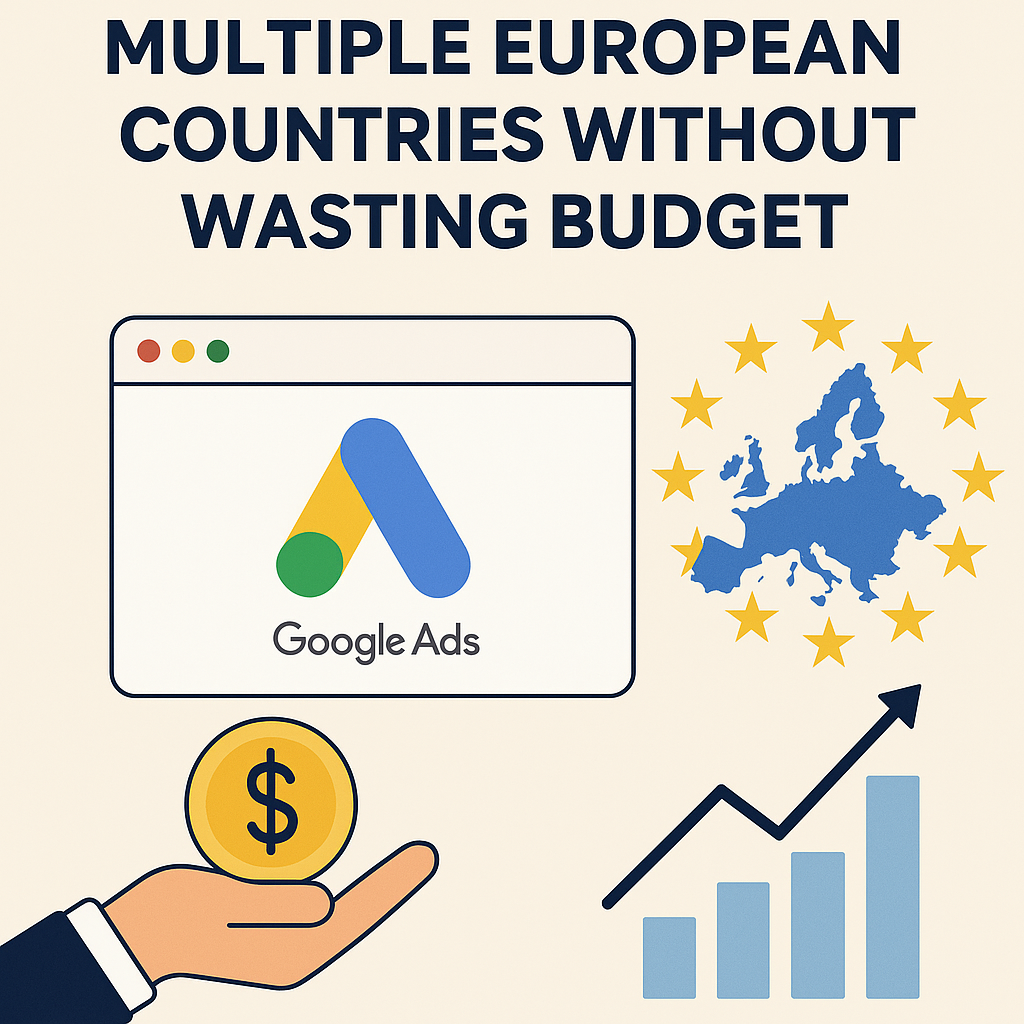How to Run Google Ads for Multiple European Countries Without Wasting Budget

Expanding your business across Europe is an exciting opportunity, but running Google Ads in multiple European countries can become a costly exercise if not managed properly. With different languages, cultures, and consumer behaviors, it's essential to plan strategically. In this blog, we'll walk you through key tips and tactics to run effective, budget-friendly Google Ads campaigns across Europe.
1. Define Clear Objectives Per Country
Before you spend a single euro, ask yourself: what do I want to achieve in each country? Are you focusing on brand awareness in France, lead generation in Germany, or e-commerce sales in the Netherlands?
By defining country-specific objectives, you avoid a one-size-fits-all approach that can waste budget. Tailor your KPIs and ad strategies to the local market realities.
2. Use Separate Campaigns Per Country
Never run a single campaign targeting multiple countries. Instead, create individual campaigns for each country. This gives you control over:
- Budget allocation
- Language and localization
- Ad scheduling based on time zones
- Country-specific ad creatives
Separate campaigns allow you to pause, adjust, or scale your efforts in specific markets without impacting the performance of others.
3. Localize Your Ads, Don’t Just Translate
Literal translations often miss the mark. Effective localization means adapting your ads to cultural nuances, tone of voice, and even seasonal references.
For example:
- A call-to-action that works in the UK might sound pushy in Sweden.
- Humor in Germany may not resonate in Spain.
Use native copywriters or tools like Google Translate in combination with human review to ensure your ads truly connect with local audiences.
4. Optimize for Local Search Terms
Keyword intent and terminology vary across countries and languages. For example, someone in Italy searching for "cheap hotels" might use "hotel economico," while in the Netherlands it could be "goedkope hotels."
Use country-specific keyword research tools or Google’s Keyword Planner with location filters to build tailored keyword lists for each region.
Also, use exact match and phrase match keywords initially to maintain control and reduce budget wastage.
5. Use Geo-Targeting and Location Bid Adjustments
Geo-targeting ensures your ads are shown only to users within your specified locations. Go further by using bid adjustments for cities or regions where your product or service performs better.
For example, if your e-commerce store sees higher conversion rates in Berlin than in Hamburg, increase your bid for Berlin while lowering it for Hamburg.
6. Tailor Landing Pages by Country
Sending all your European traffic to a single landing page in English? That’s a fast way to burn through your budget.
Create country-specific landing pages in the local language and currency. Ensure they align with the ad messaging and meet local expectations in design, tone, and trust signals (like payment options or customer reviews).
7. Leverage Google’s Location-Specific Features
Google Ads provides several features that support multi-country campaigns:
- Dynamic Keyword Insertion (DKI) in local languages
- Location Extensions showing local addresses or service areas
- Ad Customizers to show country-specific offers or pricing
Utilize these tools to make your ads more relevant to each market without managing hundreds of separate ad copies.
8. Centralized Reporting, Localized Optimization
While your campaigns should be country-specific, your reporting dashboard should be centralized. This helps you compare performance and allocate budget to the highest-performing countries.
At the same time, optimization decisions (like pausing keywords or adjusting bids) must happen at the local level based on region-specific data.
9. Test and Iterate with Local A/B Experiments
Run A/B tests per country to identify:
- Which headlines perform best in Spain
- What images drive clicks in Poland
- Which call-to-actions convert in Denmark
Avoid applying test results from one country to another. What works in Belgium might flop in Portugal.
10. Consider Currency and VAT Differences
Europe is diverse not just in language and culture, but also in currency and tax regulations. Always show product pricing in local currency and include or explain VAT where appropriate.
This builds trust and reduces drop-off at checkout or lead form stages.
Conclusion: Think Local, Act Strategic
Running Google Ads across multiple European countries is entirely doable without wasting your budget—but only with strategic planning. Focus on separate campaigns, deep localization, precise geo-targeting, and regular optimization. With the right setup, your multi-country campaigns can scale efficiently and drive profitable growth across the continent.
Start small, test what works, and let the data guide your expansion.
ALL OUR OTHER NEWS:







